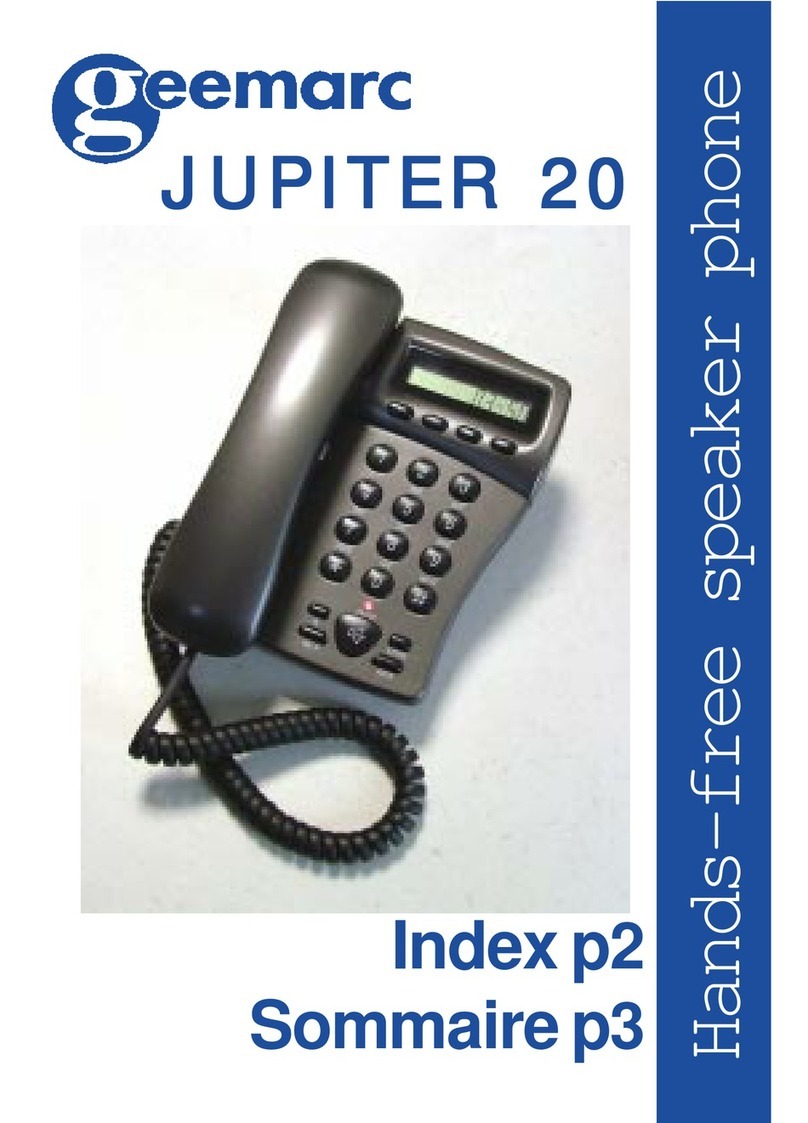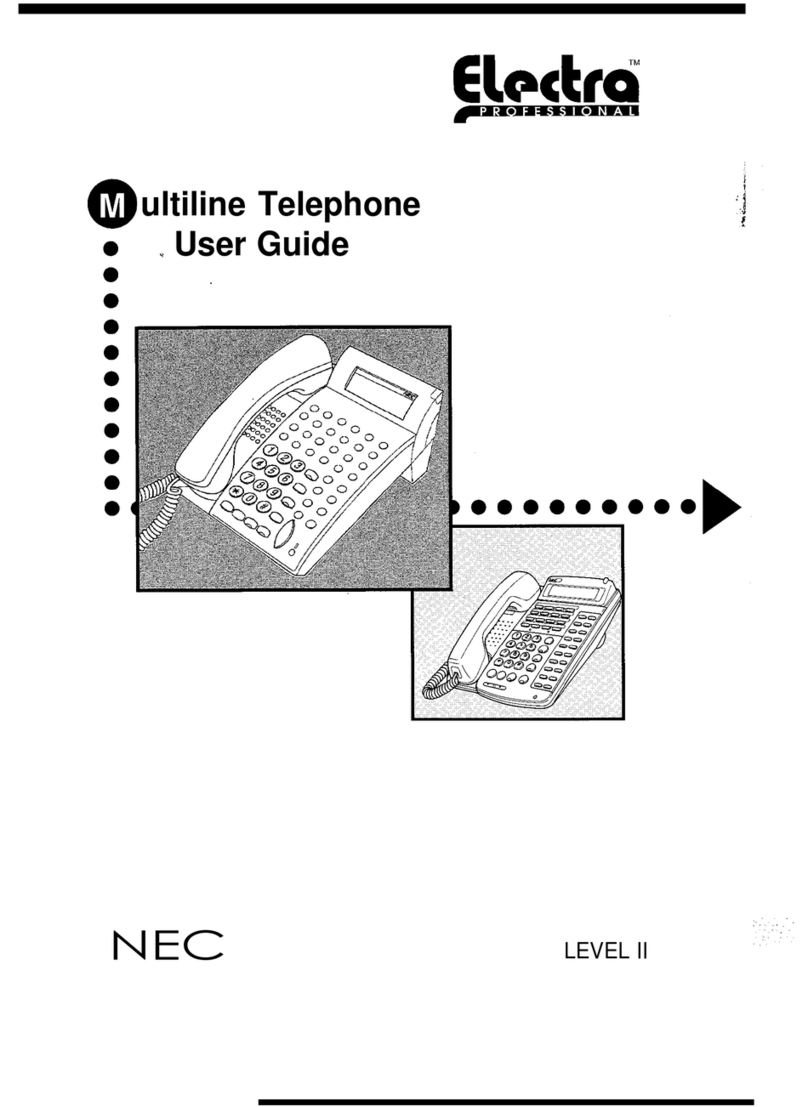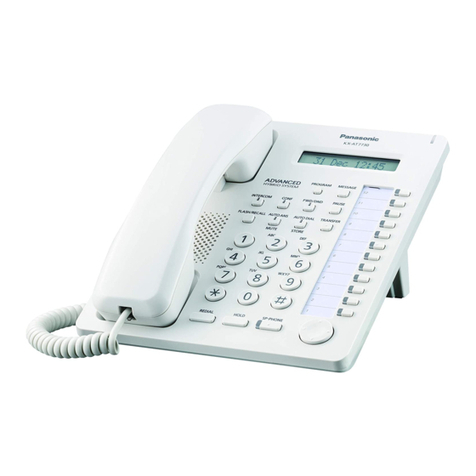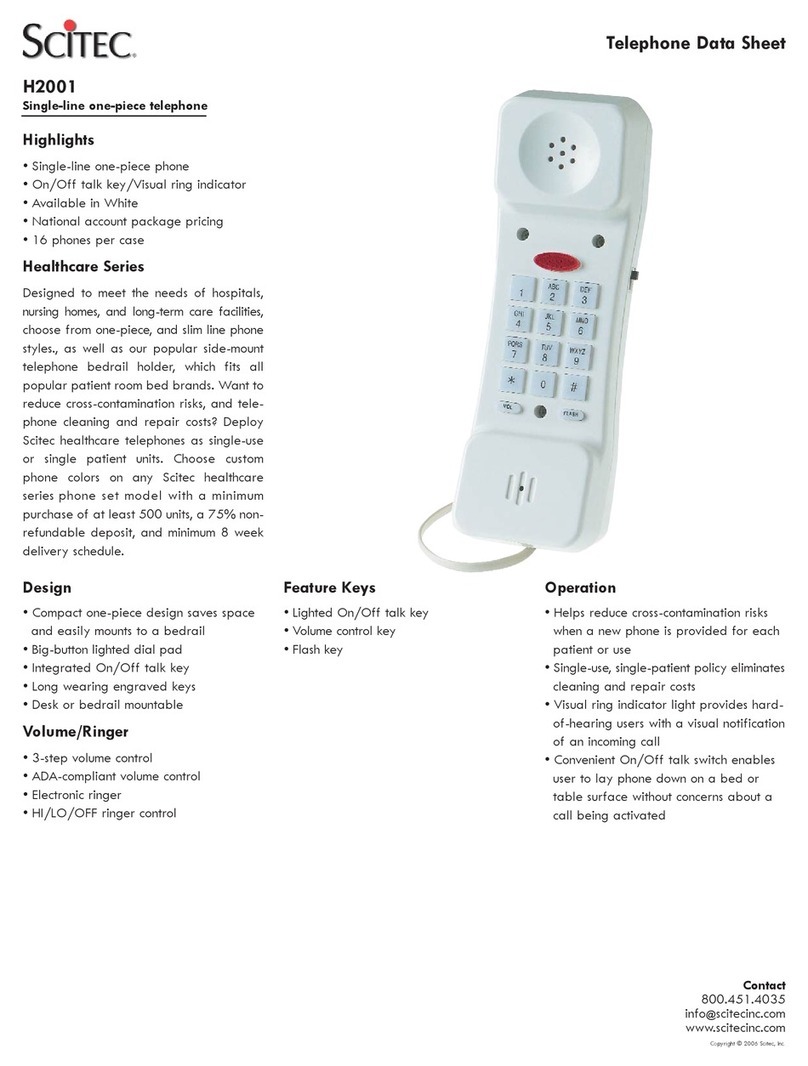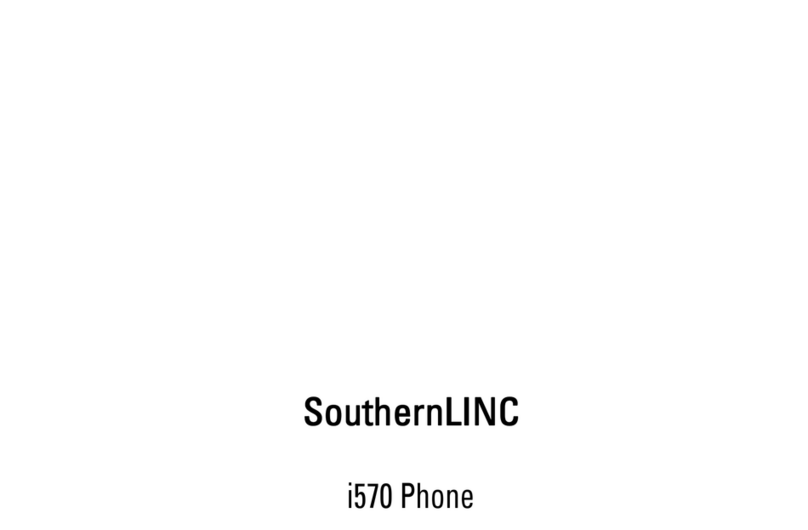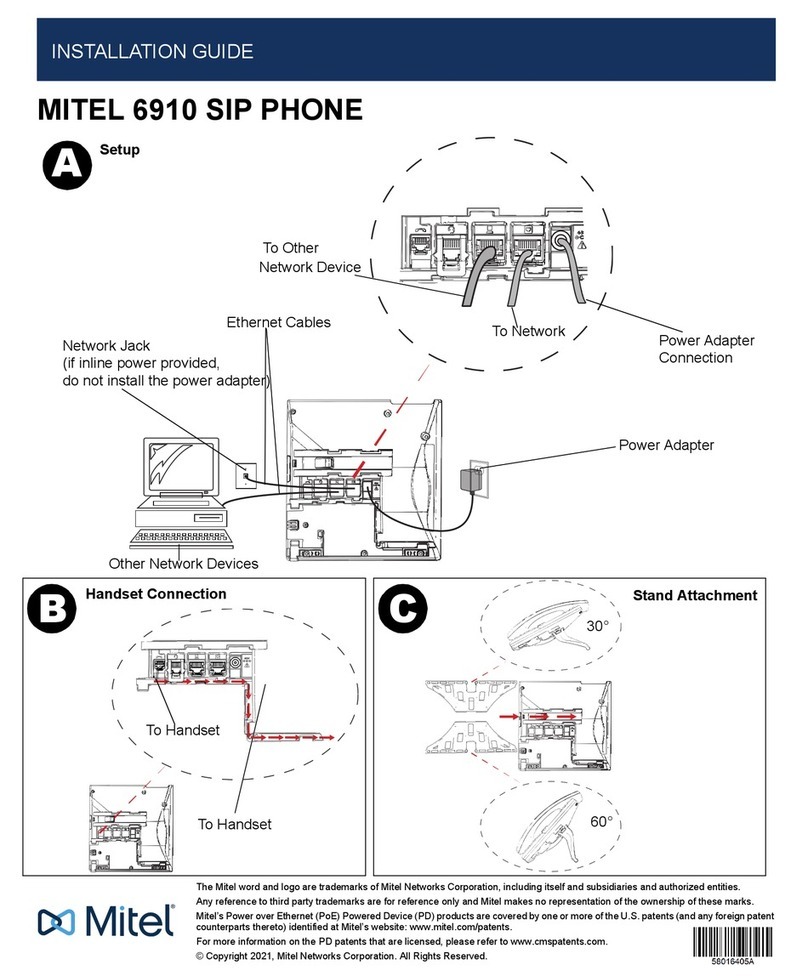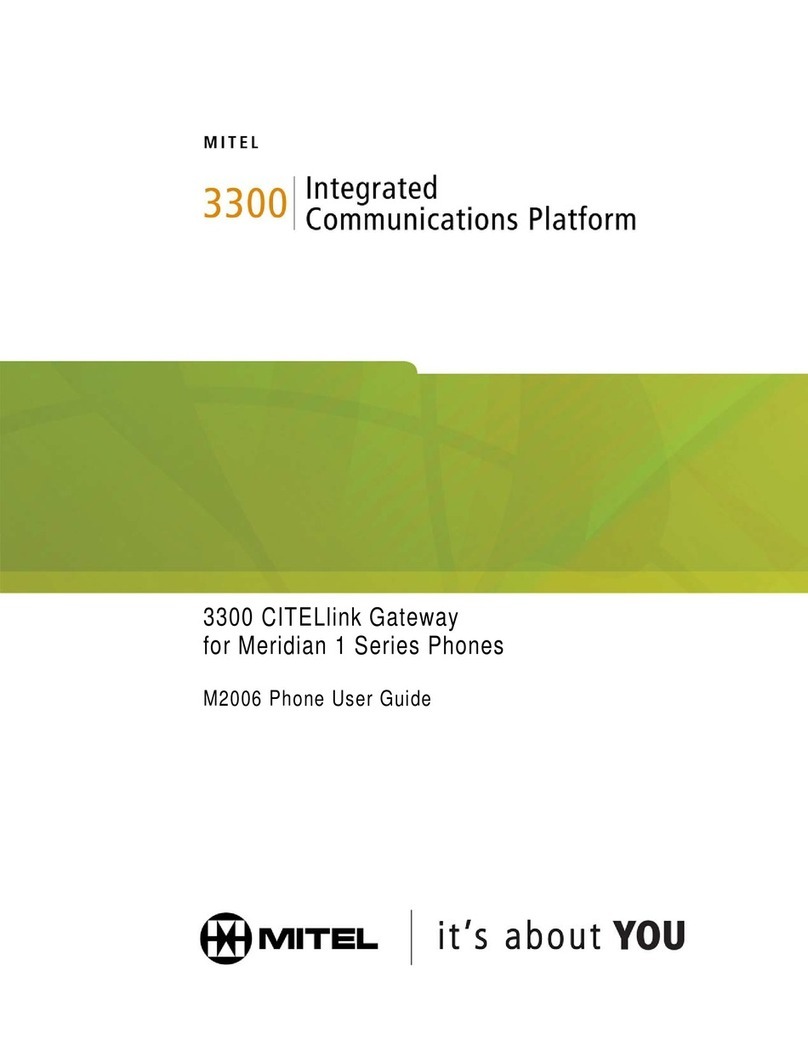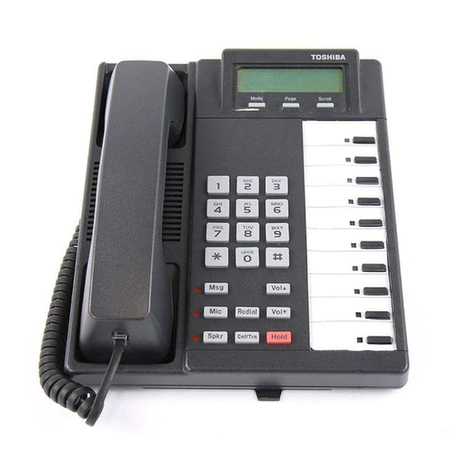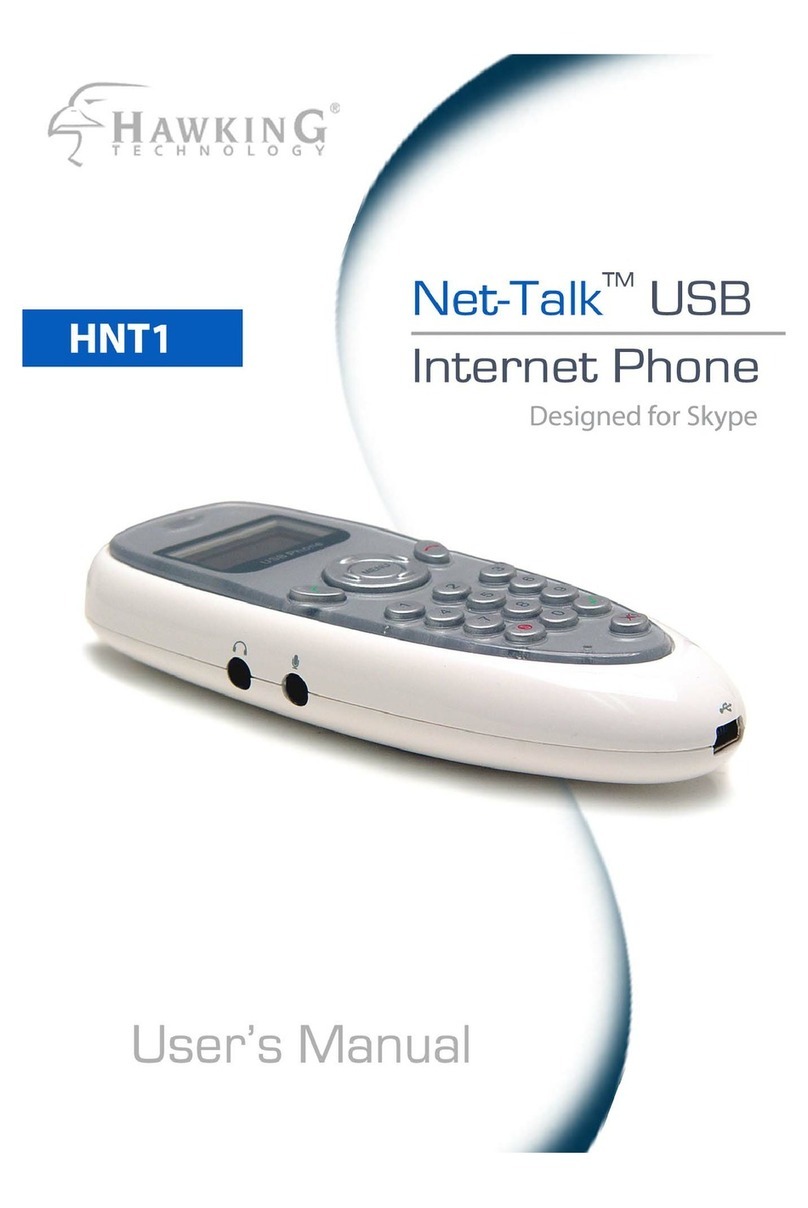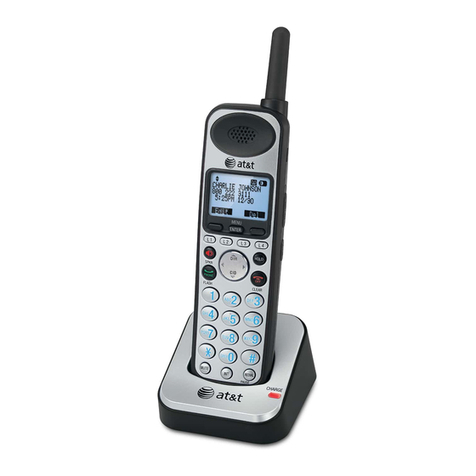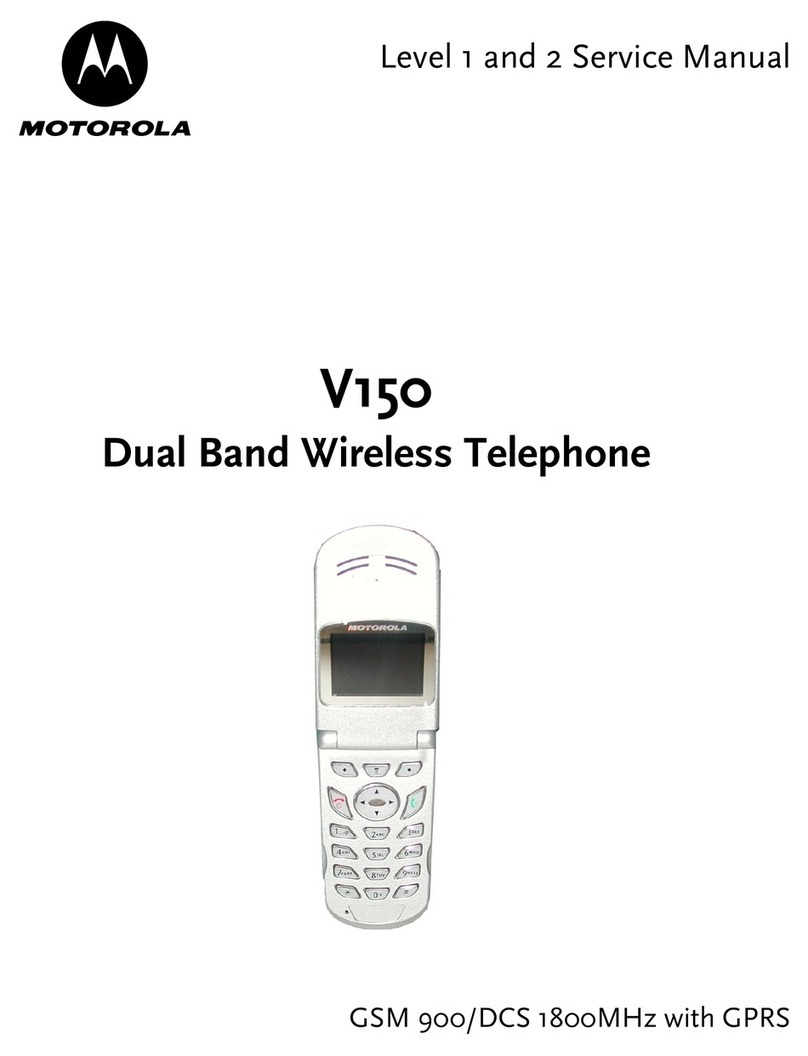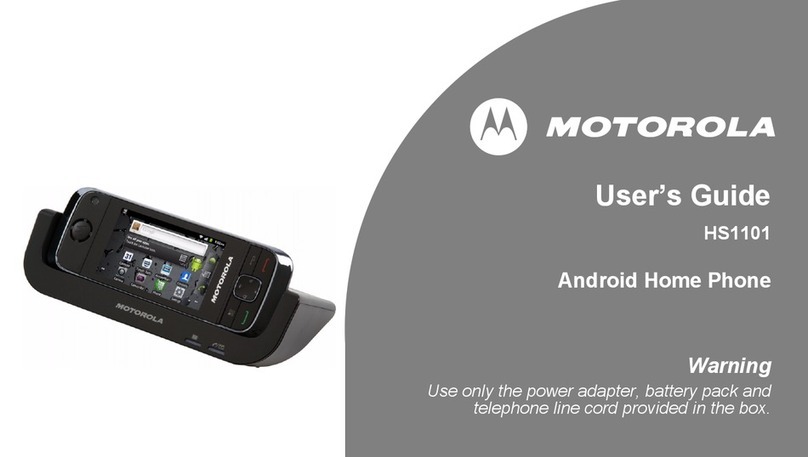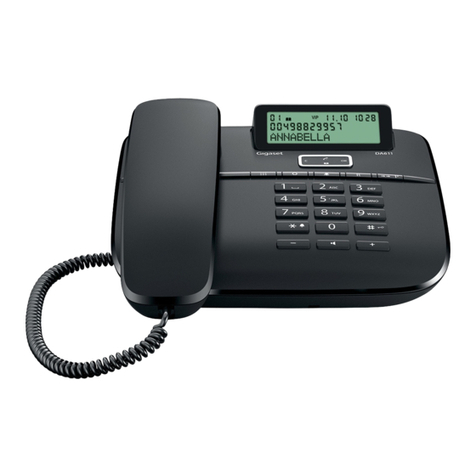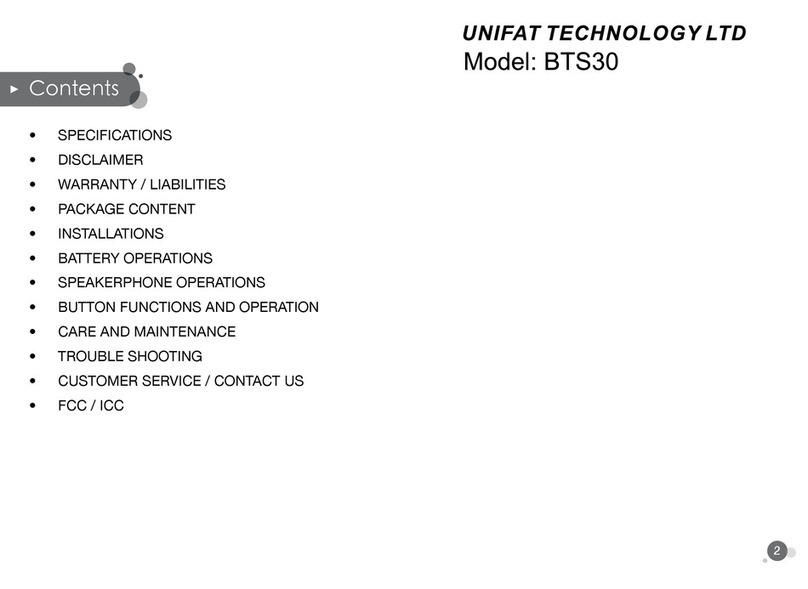Audiovox MVX-550 Operation manual

AUDIOVOX:
LEM
LOmmumte
mime
Division
of
Audiovox
Corporation
185
Oser
Ave.,
Hauppauge,
NY
11788
PRINTED
IN
JAPAN
9-93
|

TABLE
OF
CONTENTS
SYSTEM
CONFIGURATION
.................
6
WRIST
STRAP
ATTACHMENT
.........................
7
BATTERY
INSTALLATION
AND
To
Attach
the
Battery
Pack
To
Detach
the
Battery
Pack
To
Recharge
Battery
IMPORTANT
SAFETY
INSTRUCTIONS
..............
11
PRECAUTIONS
..
——
er
kas
GENERAL
SPECIFICATIONS
...................
13
FEATURES
AND
OPTIONS
...............1....
22.
14
FUNGTIONS:,,adceitesakt
ecc
ra
an
aoada
arkes
15
BASIC
OPERATION
|
sicisiscsssevsivceocassasacseetsvoseistsnacansans
17
Turning
the
Unit
On/Off
*
Antenna
Position
*
Receiving
Signal
Strength
Indicator
*
Battery
Level
Indicator
To
Store
a
Number
in
Memory
To
Recall
a
Number
from
Memory
To
Review
the
Prefix
Display
Own
Telephone
Number
Repertory
Memory
Scroll
Automatic
Storing
into
a
Vacant
Memory
Address
Secret
Memory
To
Lock
the
Unit
Automatic
Lock
(NAM
Option)
To
Unlock
the
Unit
Backlighting
On/Off
Control
Volume
Control
MEMORY
NAME
TAG
.....
T
——————
22
To
Enter
Names
using
Alpha
(Letters)
To
Store
Name
with
Phone
Number
To
Recall
from
Memory
with
Name

ALPHA
SEARCH
..................
PLACING
TELEPHONE
CA
To
Place
a
Call
If
the
Call
Fails
to
Go
Thi
:
Automatic
Redial
(NAM
©
ti
Terminating
a
Call
To
Receive
Calls
Silent
Incoming
Calls
Silent
Alert
Beep
(NAM
O.
Any
Digit
Key
Answering
Automatic
Ánswering
To
Place
a
Call
with
a
Nu
Speed
Dialing
Last
Three
Number
Redia
Programmable
Emergency
To
Mute
a
Phone
Convers:
ONE
TOUCH
DIALING.......
To
Store
a
Number
into
O
To
Place
a
Call
to
a
Numbe
VOICE:
MAIL
DIALING
.......
4...
iret
ens
To
Store
a
Numbers
To
Place
a
Call
CALL
RESTRICTION
(NAM
To
Set
Call
Restricted
Mot
To
Exit
Call
Restriction
Pi
END-TO-END
SIGNALING.
Touch
Tone™
from
Memor
Link
Dialing
SCRATCH-PAD
DIALING
...
SCRATCH-PAD
DIALING
WITHOUT
KEYING
TO!
"MC
E
24
IS
Lusso
veteres
25
ugh
tion)
tion)
NAM
Option)
iber
in
the
Memory
all
(NAM
Option)
aon
e
Touch
Memory
in
One
Touch
Memory
29
OPTION)
3
Loire:
30
gramming
Mode
PEES
E
AS
31
A
E
E
33
D
E
E
33
CALL
TIME
DISPLAY
...................
To
Display
the
Cumulative
Talk
Time
To
Display
the
Number
of
Calls
Outgoing
Call
Timer
Only
(NAM
Option)
To
Clear
the
Timer
One
Minute
Beep
(NAM
Option)
SID
MANAGEMENT
(NAM
OPTION)
...................
A/B
SYSTEM
SELECTION
............../.
LAST
RESCAN
SID
INDICATOR
......................
RADIO
FREQUENCY
(RF)
CHANNEL
INDICATOR
..........................
AUTOMATIC
CALLS
IN
ABSENCE
INDICA
TO.
cissiacterwisturirieleticssncsapeisiaverreauahous’
IMPORTANT
SAFETY
INFORMATION
..............
To
Display
the
Talk
Time
of
the
Last
Call
35
35
36
37
37
37
38
38
39
39
Touch
Tone™
is
a
registered
trade
mark
of
AT
&
T.

AUDIOVOX
*MINIVOX
IT”
HANDHELD
PORTABLE
CELLULAR
TELEPHONE
Audiovox
introduces
the
Minivox
II,
one
of
the
most
advanced
handheld
portable
cellular
telephones
in
the
world.
Your
new
Minivox
H
allows
you
the
free-
dom
to
enjoy
the
benefits
of
cellular
communications
without
the
limitations.
Your
new
Minivox
IE
has
been
built
to
the
same
exacting
level
of
high
engineering
standards
that
has
made
the
Audiovox
cellular
telephone
line
the
top
rated
brand
in
the
industry.
The
Minivox
II
is
packed
with
advanced
features
that
provide
the
ultimate
in
convenience
and
safety,
like
one
touch
dialing,
programmable
emergency
calling
and
a
battery
life
indicator.
The
Minivox
Ii
also
features
“Any
Digit
Key
Answer"
that
allows
you
to
answer
a
call
by
pressing
any
of
the
numbered
keys
on
the
keypad.
It
also
has
the
ability
to
redial
any
of
the
last
three
numbers
you
attempted
to
call!
Optional
accessories
include
a
desk
top
charger,
rapid
charger,
a
hands
free
car
kit
with
an
RJ11
output
(for
interface
with
a
laptop
computer
or
facsimile
machines)
and
provisions
for
external
antenna
and
power
booster.
A
cigarette
lighter
adaptor
and
leather
carrying
case
are
also
available.
And
of
course,
your
new
Minivox
II
comes
with
some-
thing
only
an
Audiovox
phone
can
provide.
The
proven
reliability
that
has
made
Audiovox
one
of
the
worlds
leading
suppliers
of
cellular
communications
equip-
ment.
SYSTEM
CONFIGURATION
System
configuration
and
the
equipment
list
are
as
shown
below.
Handheld
Portable
Wrist
Strap
FE
elephone
Spare
Battery
Pack
Travel
Battery
Charger
Battery
Pack
List
of
Equipment
Name
of
the
Equipment
Handheld
Portable
Telephone
Battery
Pack
(BTE-700)
Wrist
Strap
(WS-700)
Travel
Battery
Charger
(TRC-700A)
Spare
Battery
Pack
(BTR-700)

WRIST
STRAP
ATTACHMENT
Attach
the
wrist
strap
to
the
unit
through
the
strap
hole
as
shown
below
(D.
Then
put
the
long
loop
through
the
smaller
loop
as
shown
below
©.
BATTERY
INSTALLATION
AND
RECHARGING
The
Portable
Telephone
contains
a
Detachable
Battery
Pack
(BTR-700/BTE-700).
Fully
charged
Battery
Pack
offers
approximately
60
minutes
Talk
Time
or
12
hours
standby
for
BTR-700,
and
approximately
100
minutes
Talk
Time
or
20
hours
standby
for
BTE-700.
It is
recommended
to
carry
one
fully
charged
spare
Bat-
tery
Pack
for
longer
operation.
(Additional
Battery
Packs
may
be
purchased
at
your
Cellular
Telephone
Dealer.)
To
Attach
the
Battery
Pack
(D
Insert
the
hook
at
the
end
of
the
Battery
Pack
into
the
slot
at
the
end
of
the
unit.
(2
Press
the
Battery
Pack
down
to
lock
the
Battery
Pack
onto
the
unit.
To
Detach
the
Battery
Pack
(D
Press
the
Release
Latch
as
shown
below.
(2)
Lift
up
to
remove
the
Battery
Pack
from
the
unit
gently.
Release
Latch

To
Recharge
Battery
The
Travel
Battery
Charger
(TRC-700A)
can
recharge
the
Standard
Battery
(BTE-700)
at
10
hours
or
an
op-
tional
Slim
Battery
(BTR-700)
at
6
hours
respectively.
1.
Set
the
Battery
Pack
(D
Holding
the
Travel
Battery
Charger
in
your
hand,
insert
the
Battery
Pack
into
the
Travel
Battery
Charger.
(2)
Press
the
Battery
Pack
down
to
lock
the
Battery
Pack
onto
the
Travel
Battery
Charger.
2.
Flip
up
the
blades
on
the
back
side
of
the
Travel
Battery
Charger
and
plug
into
AC
outlet.
The
LED
(Light
Emitting
Diode)
on
the
Travel
Battery
Charger
will
light
red
while
recharging.
Note:
(1)
Environmental
temperature
for
full
battery
recharging
with
fixed
time:
0
~
+35°C
(2)
We
recommend
you
to
set
the
Battery
Pack
in
to
the
Travel
Battery
Charger
and
plug
into
AC
outlet
as
shown
below.
3.
After
recharging
has
been
finished,
unplug
from
AC
outlet
and
take
off
the
Battery
Pack
so
as
not
to
reduce
the
life
and
capacity
of
the
Battery
Pack.
D
Unplug
from
AC
outlet
by
holding
the
top
of
Travel
Battery
Charger
as
shown
below.
(2
Holding
the
Travel
Battery
Charger
with
your
hand,
and
then
press
the
Release
Latch
as
shown
below.
©
Lift
up
to
remove
the
Battery
Pack
from
the
Travel
Battery
Charger
gently.
Q
Ü
@
zi
10

IMPORTANT
SAFETY
INSTRUCTIONS
for
Travel
Battery
Charger
1.
SAVE
THESE
INSTRUCTIONS
-
This
manual
con-
tains
important
safety
and
operating
instructions
for
battery
charger.
2.
Before
using
battery
charger,
read
all
instructions
and
cautionary
markings
on
(1)
battery
charger,
(2)
battery,
and
(3)
product
using
battery.
3.
CAUTION
-
To
reduce
risk
of
injury,
charge
only
Ni-
MH
type
rechargeable
batteries.
Other
types
of
bat-
teries
may
burst
causing
personal
injury
and
damage.
Do
not
expose
charger
to
rain
or
snow.
5.
Use
of
an
attachment
not
recommended
or
sold
by
the
battery
charger
manufacturer
may
result
in
a
risk
of
fire,
electric
shock,
or
injury
to
persons.
6.
An
extension
cord
should
not
be
used
unless
abso-
lutely
necessary.
Use
of
improper
extension
cord
could
result
in
a
risk
of
fire
and
electric
shock.
If
extension
cord
must
be
used,
make
sure:
a.
That
pins
of
plug
of
extension
cord
are
the
same
number,
size,
and
shape
as
those
of
plug
on
charger;
b.
That
extension
cord
is
properly
wired
and
in
good
electrical
condition;
and
c.
That
wire
size
is
large
enough
for
AC
ampere
rating
of
charge.
7.
Do
not
operate
charger
with
damaged
plug
—
replace
charger
immediately.
8.
Do
not
operate
charger
if
it
has
received
a
sharp
blow,
been
dropped,
or
otherwise
damaged
in
any
way;
take
it
to
an
authorized
Audiovox
cellular
service
center.
9.
Do
not
disassemble
charger;
take
it
to
an
authorized
Audiovox
cellular
service
center
when
service
or
repair
is
required.
Incorrect
reassembly
may
result
in
a
risk
of
electric
shock
or
fire.
10.
To
reduce
risk
of
electric
shock,
unplug
charger
from
outlet
before
attempting
any
maintenance
or
cleaning.
11
PRECAUTIONS
Your
Handheld
Portable
Telephone
is
a
high
quality
piece
of
equipment.
Before
operating
the
equipment,
please
take
the
following
precautions.
1.
Don’t
use
this
equipment
in
an
extreme
environment
where
high
temperature
or
high
humidity
exists.
2.
Don’t
abuse
the
equipment.
Avoid
striking,
shaking
or
shocking.
When
not
using
the
unit,
lay
down
the
unit
to
avoid
possible
damage
due
to
instability.
3.
Don’t
expose
this
equipment
to
rain
or
spilled
bever-
ages.
4.
Recharge
the
battery
fully
before
your
first
use
of
the
unit.
5.
When
the
battery
becomes
discharged,
two
beep
tones
will
be
heard
every
10
seconds,
and
the
display
will
show
Disc
ed.
Replace
the
discharged
battery
with
a
fully
charged
one,
and
recharge
the
dis-
charged
battery.
6.
To
ensure
e
Jong
battery
life,
operate
the
unit
until
scha
is
displayed,
then
recharging
the
bat-
tery.
Setitve
Battery
Pack
from
the
unit
when
it
is
not
expected
to
be
used
for
a
long
period.
Recharging
at
least
once
every
month
is
recommended
when
not
being
used.
7.
Don't
charge
the
Battery
in
a
place
in
the
sunshine.
The
product
that
you
have
purchased
con-
à
S
tains
a
rechargeable
Battery.
The
Battery
is
recyclable.
At
the
end
of
it's
useful
life,
under
various
state
and
local
laws,
it
may
be
illegal
to
dispose
of
this
Battery
into
the
municipal
waste
stream.
Check
with
your
local
solid
waste
officials
for
details
in
your
area
for
recycling
options
or
proper
dis-
posal.
Ni-M
12

GENERAL
SPECIFICATIONS
(Subject
to
change
without
notice)
Frequency
Range
:
Number
of
RF
Channels
:
Channel
Spacing
:
Duplex
Spacing
:
Frequency
Stability
:
RF
Output
Power
:
Receiver
Sensitivity
:
Modulation/Demodulation
:
Operating
Temperature
:
Supply
Voltage
:
Current
Drain
:
Operating
Time
:
Size
Weight
824
to
849
MHz,
Transmit
869
to
894
MHz,
Receive
832,
Full
Duplex
30
KHz
45
MHz
+2.5
PPM
0.6W
ERP
With
Power
Control
-116
dBm
(12
dB
SINAD)
Voice
PM
(With
Compander)
Data
FM
-20°C
to
+60°C
4.8
V
(NiMH
Battery
1.2
V
x
4,
1100
mAH)
In
Use;
Approx.
540
mA
Standby;
Approx.
50
mA
BTR-700
Talk;
Approx
60
min.
(at
full
power
output)
Standby;
Approx.
12
hours
BTE-700
Talk;
Approx.
100
min.
(at
full
power
output)
Standby;
Approx.
20
hours
Approx.
25
(H)
x
53
(W)
x
160
(D)
mm
0.96
(H)
x
2.1
(W)
x
6.3
(D)
inch
Approx.
260
gr
(9.2
oz)
13
FEATURES
AND
OPTIONS
*
Push
Button
Dialing
*
Backlit
Keypad
and
Display
with
On/Off
Control
*
Large
Size
Dot-matrix
LCD
Display
Status/Function
Indicator
15
Digits
Dial
Number
Receiving
Signal
Strength
Indicator
*
Battery
Level
Indicator
*
(Electronic)
Volume
Control
*
Pre-set
Dialing
up
to
16
Digits
(32
Digits:
NAM
Option)
*
Extended
Readability
(Prefix
Review)
*
Last
Digit
Clear
*
Digit
Display
Clear
*
Programmable
Emergency
Call
in
locked
or
restricted
modes
*
Repertory
Dialing:
16/80-Digit
100
Memories
*
Speed
Dialing
*
Repertory
Memory
Scroll
*
Automatic
Storing
into
a
Vacant
Memory
Address
*
Secret
Memory
*
Memory
Name
Tag
*
Alpha
Search
*
Linked
Preset
Dialing
from
Memory
*
Voice
Mail
Dialing
*
One
Touch
Dialing
*
Any
Digit
Key
Answering
(NAM
Option)
*
Automatic
Answering
*
Last
Number
Redial
*
Last
Three
Number
Redial
*
Automatic
Redial
(NAM
Option)
*
Mute
or
Hold
*
Scratch-pad
Dialing
(with/without
Keying
Tones)
*
End-to-End
Signaling
*
Touch
Tone™
from
Memory
*
Continuous
DTMF
from
Keypad
*
Call
Restrictions
(NAM
Option)
*
Silent
Incoming
Calls
*
Silent
Alert
Beep
(NAM
Option)
*
Call
Time
Display
(Five
Functions)
*
Automatic
Calls
in
Absence
Indicator
*
Display
Own
Telephone
Number
*
Multiple
A/B
System
Selection
*
SID
Management
(NAM
Option)
*
Multiple
City
Registration
*
Last
Rescan
SID
Indicator
*
RF
Channel
Indicator
*
Electronic
Lock
*
Automatic
Lock
(NAM
Option)
*
Function
Review
*
Serial
Data
I/O
Mode
14

FUNCTIONS
Retractable
Whip
Antenna
(DIN
USE
(2)NO
SVC
Earpiece
(3)
ROAM
(6)
Receiving
Signal
(4)
LOCK
Strength
Indicator
(5)
Power
Indicator
(7)
Alpha
—
Numeric
Display
(8)
Send
Key
(12)
One
Touch
Dial
Key
(9)
End
Key
(13)
Voice
Mail
Access
Key
(14)
Store
(10)
Power
Key
On/Off
esl
Key
E
(15)
Recall
Key
ra
(16)
Volume/
(11)
Digit
Alpha
Keys
Key
4
(17)
Function
bung
z
Key
-
m:
(18)
Clear
HHESROHARODESN
=
Key
Microphone
15
(1)
(2)
(3)
(4)
(5)
(6)
(7)
(8)
(9)
(10)
1
(11)
(12)
(13)
(14)
(15)
(16)
(17)
(18)
NUSE
indicator
lights
when
a
call
is
in
progress.
NOSVO!
(no
service)
indicator
lights
when
the
unit
Is
in
a
non-coverage
area.
ROAM!)
indicator
lights
when
the
unit
is
out
of
the
home
area.
[EZ
x
E
NE
à
LOCK!
indicator
lights
when
the
unit
is
locked.
is
used
as
a
POWER
ON
indicator
which
lights
when
the
unit
is
turned
on.
RECEIVING
SIGNAL
STRENGTH
INDICATOR:
The
number
of
shaded
blocks
indicates
the
Receiv-
ing
Signal
Strength.
15-CHARACTER
FUNCTIONAL
ALPHA-
NUMERIC
DISPLAY:
First
5
characters
indicate
current
function
and
status
conditions.
The
remaining
10
characters
show
the
last
10
digits
of
the
dialed
number.
BENG
(send
key)
is
used
for
placing
or
receiving
a
call.
(end
key)
terminates
a
call.
§
(power
on/off
key)
is
used
to
turn
on/off
the
unit.
DIGIT
KEYS
to
enter
a
phone
number.
ME
(one-touch
key}
allows
you
to
place
a
call
with
a
single
key
stroke.
(voice
mail
access
key)
allows
you
to
access
the
linked
speed
dialing
capability.
memory.
RCE
(recall
key)
recalls
phone
numbers
from
reper-
tory
memory.
MOL/ALPH
(volume/alpha
key)
is
used
to
control
Earpiece
audio
level
as
well
as
the
Alert
Tone.
YOU
is
also
used
as
ALPE
(alpha
key)
in
combination
with
[ENG
to
enter
5
Alphabetical
char-
acters.
ENG]
(function
key)
shifts
the
digit
keys
to
the
functional
keys.
CER
(clear
key)
clears
the
digit(s)
from
the
display.
16

BASIC
OPERATION
Turning
the
Unit
On/Off
Press
PWR!
for
about
one
second
to
turn
on
the
unit.
The
indicator
|T}
will
light
(all
indicators
will
light
momentar-
ily:
display
will
show
the
programmed
name
or
your
phone
number,
and
a
tone
will
be
heard).
Press
again
for
about
one
second
to
turn
off
the
unit.
*
Antenna
Position
Your
portable
cellular
telephone
has
been
equipped
with
a
dual
position
antenna
system.
This
dual
position
antenna
has
been
especially
designed
to
allow
your
phone
to
receive
calls
while
the
antenna
is
down.
However,
for
optimum
performance
and
signal
strength
or
while
operating
in
poor
signal
areas,
it
is
recommended
that
the
antenna
be
fully
extended.
Note:
The
antenna
can
be
used
in
its
fully
extended
or
fully
retracted
position
only.
*
Receiving
Signal
Strength
Indicator
The
number
of
shaded
blocks
indicates
the
Signal
Strength
in
your
area.
Four
blocks
show
the
maximum
level.
The
display
will
vary
as
you
move
with
the
unit.
If
the
signal
is
not
strong
enough
to
place
a
call,
the
NOSVC)
indicator
will
appear
on
the
readout.
*
Battery
Level
Indicator
You
can
monitor
the
current
battery
voltage
level.
Press
RCL,
key
[X]
then
8;
the
battery
voltage
condition
will
be
displayed
on
the
readout
in
one
of
four
steps
for
5
sec..
The
number
of
shaded
blocks
indicates
the
battery
con-
dition
as
follows:
‘BEEBE
|
Full
charge
BEUH
|
Normal
phone
call
IBBBNB-
- |
Short
phone
call
BE-
-
-|
Recharge
battery
To
Store
a
Number
in
Memory
1.
Press
CLĦ,
then
enter
the
phone
number.
2.
Press
STOl,
then
enter
the
memory
address
(01
through
99).
Example:
Press
(STO),
key
H
|t]
then
i5,
the
displayed
number
will
be
stored
into
memory
address
15.
Note:
A
number
of
more
than
16
digits
can
be
stored
only
into
memory
address
96
through
99.
(See
link
dialing,
page
31.)
17
To
Recall
a
Number
from
Memory
Press
REL,
then
enter
the
memory
address
(01
through
99).
Example:
Press
RCt),
key
|t
then
[5]
the
number
stored
in
memory
address
15
will
be
displayed
on
the
readout.
To
Review
the
Prefix
(Number
longer
than
10
digits)
After
pressing
RELI,
hold
down
the
second
digit
of
the
memory
address.
Note:
When
a
set
of
linked
numbers
is
recalled,
you
can
review
only
the
last
linked
number
by
this
fea-
ture.
To
review
Link
1
to
Link
5,
use
(ENG,
RCL)
then
key
|Xi
(X
is
1
to
5).
See
*Link
Dialing".
Display
Own
Telephone
Number
You
can
see
your
system
ID
number
and
your
own
phone
number
on
the
readout.
Press
RE,
key
[|
then
B
again.
The
System
ID
number
is
shown
while
pressing
key
[|
at
the
2nd
time.
Repertory
Memory
Scroll
This
feature
is
useful
in
finding
a
certain
phone
number
by
scrolling
the
repertory
memory
from
one
of
the
desig-
nated
startin
d
addresses.
1.
Press
i
key
[Xi
then
X]
is
the
digit
to
assign
the
starting
address
as
follows.
Starting
address
Oo
e
èe
enero!
mM
bo
mM
18

2.
Press
[Él
or
[|
:Seroll
upward
(with
roll
back
to
01)
fil
:Scroll
downward
(with
roll
up
to
99)
Memory
address
and
the
last
7
digits
of
the
stored
number
will
be
displayed
on
the
readout
as
follows.
Example:
£3
|
Address
No.
Tel.
No.
Note:
In
this
scroll
feature,
any
vacant
memory
address(es)
will
be
skipped.
Automatic
Storing
into
a
Vacant
Memory
Address
This
feature
allows
automatic
storing
into
a
vacant
rep-
ertory
memory
address.
This
ends
the
possible
problem
of
writing
over
a
previously
stored
number.
1.
Enter
the
phone
number.
2.
Press
STO.
3.
Enter
the
memory
address
group
number
in
which
you
want
to
store
a
number.
Ig:
From
01
to
10
Et]
:
From
11
to
20
:
From
21
to
30
*
e
e
.
* 2
B
:
From
81
to
90
EN
From
91
to
99
gH:
From
01
to
99
4.
Press
li
The
memory
address
and
the
last
7
digits
of
the
stored
phone
number
will
be
displayed
on
the
readout
as
follows.
Example:
APRA
Note:
If
there
is
no
vacant
address
in
the
assigned
area,
the
phone
number
will
not
be
stored
in
the
memory.
Secret
Memory
This
feature
allows
you
to
store
ID
code,
telephone
credit
card
numbers,
etc.
in
secret
memory
locations.
For
secu-
rity
purposes,
you
must
enter
your
three-digit
security
code
to
display
the
secret
number.
For
practical
use
of
the
secret
memory,
refer
to
"END-TO-END
SIGNALING".
19
To
Store
the
Secret
Number
1.
Press
GER,
then
enter
secret
number.
2.
Press
ENC,
STO,
then
es
the
memory
address
(01
through
99).
JISIEICIRIEITI-
will
be
displayed
on
the
readout.
Example:
To
store
the
secret
number
9876
into
memory
address
41
or
automatically
store
this
number
into
a
vacant
memory
address
of
40's.
1.
Press
CER).
2.
Enter
secret
number
7
S
m S
Eee)
3.
Press
ENG,
STO!
.
(secret
memory
store)
—
4.
Press
keys
i4
1!
.
(address
number)
or
press
keys
4)
i$].
(to
store
vacant
memory
address
of
40's)
To
Confirm
the
Secret
Number
Enter
the
three-digit
security
code.
2.
Press
AGE,
then
enter
the
memory
address
(01
through
99).
The
last
10
digits
of
the
secret
number
will
be
displayed
on
the
readout.
E
Example:
To
confirm
the
secret
number
stored
into
memory
address
41.
"E
1.
Enter
the
three-digit
security
code
[H
(2
2.
Press
REL],
key
H$
then
Ht].
1249181718]
Note:
If
you
recall
the
secret
memory
without
the
three-
digit
security
code,
the
secret
number
is
not
dis-
played
on
the
readout
as
shown
below:
Press
RCL],
key
[4]
then
H].
u
u
PLS
ASIBICIRIETTES
or
Press
RELI,
key
(4:
then
[£i
s.
To
Lock
the
Unit
Press
ENG),
then
key
|11
(LOCK).
The
LOCK]
indicator
lights.
The
unit
will
remain
locked
until
unlocked,
even
if
the
power
is
turned
off.
20

Automatic
Lock
(NAM
Option)
If
you
request
the
feature
of
Automatic
Lock,
your
NAM
can
be
programmed
so
that
your
unit
will
automatically
go
into
the
locked
condition
when
the
power
of
the
unit
is
turned
“off”.
When
PWA
is
turned
“on”,
the
unlock
code
is
required
to
operate
the
unit.
To
Unlock
the
Unit
Enter
the
three-digit
unlock
code.
The
indicator
will
go
out
when
the
three-digit
code
is
the
same
as
the
code
registered
in
the
NAM.
Backlighting
On/Off
Control
LCD
display
and
the
keypad
are
backlit
automatically
after
the
Power-On.
If
needed,
backlighting
can
be
turned
off
by
pressing
ROL,
key
B€
then
[8l
Even
if
the
unit
is
in
the
backlighting
“Off
"
mode,
the
backlighting
will
be
turned
on
again
automatically
for
10
seconds
when
any
key
operation
is
conducted
or
a
call
is
received.
To
return
to
the
backlighting
"On"
mode,
press
REE,
key
'%|
then
[5]
again.
Volume
Control
The
audio
level
of
the
earpiece
and
the
alert
tone
can
be
adjusted
by
the
Volume
Control
Key
VOL.
*
Earpiece:
Keep
pressing
VOL]
until
you
get
the
desired
sound
level.
Sound
level
will
be
displayed
on
the
readout
digitally
during
the
level
adjustment
and
the
sample
tone
will
indicate
the
sound
level
when
you
are
not
engaged
in
a
telephone
conversation.
The
display
for-
mat
is
as
follows.
H.S
E]
à
to
9)
*
Alert
Tone:
Press
ACL,
key
:X.
then
[61
Then
adjust
the
alert
tone
level
in
the
same
manner
as
above.
Your
telephone
will
ring
at
the
new
level.
In
this
case,
the
display
format
is
as
follows.
ALT
[|
(1
to
9)
21
MEMORY
NAME
TAG
This
feature
permits
you
to
tag
an
identifying
name
(in
up
to
5
characters)
to
each
phone
number
in
the
memory
address.
The
name
will
be
displayed
each
time
you
recall
a
number
from
memory
address.
To
Enter
Names
using
Alpha
(Letters)
1.
Press
[ÉNG,
then
ALPH.
Alpha)
will
appear
on
the
readout
to
indicate
the
Alpha
Mode
is
active.
2.
Press
digit
keys
repeatedly
until
the
character
you
need
appears.
The
following
table
shows
which
char-
acter
is
assigned
with
each
digit
key.
Key
ASSIGNED
ALPHA
CHARACTERS
1
(Blank)
3
-
1
2
(ABC)
A
B
c
2
3
(DEF)
D
E
F
3
4
(GHI)
G
H
I
4
5
{JKL}
T
K
L
5
6
(MNO)
M
N
[e]
6
7
(PRS)
P
Q
R
S
7
8
(TUV)
T
U
V
8
9
(WXY)
W
X
Y
Zz
9
0
0
* *
#
E]
3.
When
the
character
you
need
is
displayed,
press
IPH
to
move
to
the
next
space.
4.
Go
back
to
step
2,
and
repeat
the
same
procedures
until
the
complete
character
name
is
displayed.
5.
When
an
entry
error
is
made,
press
GER
momentar-
ily
to
erase
the
last
character.
If
you
press
GER
more
than
a
second,
all
characters
on
the
readout
will
be
erased.
=
Nd
6.
To
exit
Alpha
Mode,
press
ENG,
then
ALPE.
22

To
Store
Name
with
Phone
Number
1.
Enter
i:
he
d
number.
2.
Press
[PNG],
then
ALPH
to
set
Alpha
Mode.
3.
Enter
the
name
you
aged:
(Refer
to
“To
Enter
Names
using
Alpha"
-)
STO,
then
enter
the
memory
address
(01
through
99),
to
store
the
number
with
the
name
into
memory.
Note:
If
you
enter
the
phone
number
after
entering
the
name,
the
name
will
be
erased.
Example:
To
store
the
phone
number
123-4567
with
the
name
JOHN
into
memory
address
15.
1.
Enter
the
phone
number;
E
UM
2
t3)
4
[5]
16i
[7]
2.
Set
Alpha
Mode;
IALPH
|
JALPH
3.
Enter
the
Name;
[61
5
6:
ALPH
(J)
[4j
3H
AL
Hs
|
(H) (N)
4.
Store
the
Number;
STO
FE
B
To
Recall
from
Memory
with
Name
Recalling
from
the
repertory
memory
with
name
is
iden-
tical
to
standard
repertory
recall.
When
the
number
is
recalled,
the
display
will
show
the
Alpha
Name
Tag
as
well
as
the
stored
phone
number.
23
ALPHA
SEARCH
This
feature
permits
you
to
find
a
phone
number
stored
in
the
memory
by
the
first
character
of
the
Alpha
Name
Tag.
This
search
can
retrieve
all
entries
beginning
with
the
Snad
initial
character.
1.
Press
,
then
AEPH
to
set
the
Alpha
Mode.
2.
Enter
the
initial
character,
by
which
you
need
to
search
the
phone
number.
3.
Press
BCE,
then
ALPH.
The
display
will
show
the
first
entry
whose
Name
Tag
begins
with
the
assigned
initial
character,
and
which
is
stored
in
the
lowest
memory
address.
Display
shows
Name
Tag,
Memory
Address
and
Phone
Number.
4.
Press
$8
or
X.
:Scroll
memory
address
upward.
i]
:Scroll
memory
address
downward.
Example:
Operation
Display
FEET
zs
&
24

PLACING
TELEPHONE
CALLS
To
Place
a
Call
1.
Enter
the
phone
number.
The
last
15
digits
of
the
dialed
number
are
displayed
on
the
readout.
Note:
After
120
sec.,
display
will
return
to
the
10-
digit
display
mode.
2.
Ifa
dialing
error
is
made,
press
GER,
then
enter
the
phone
number
again.
Pressing
momentarily
(less
than
approx.
0.5
sec.)
clears
only
the
last
digit.
3.
Press
SEND.
The
NUSE
indicator
will
light.
When
the
called
party
answers,
proceed
with
your
conver-
sation.
Note:
If
assigned
in
NAM,
the
phone
number
can
be
pre-
set
up
to
32
digits.
However,
in
this
case
it
is
necessary
to
confirm
with
system
operator
whether
such
service
is
available
or
not.
If
the
Call
Fails
to
Go
Through
1.
If
you
hear
the
“reorder”
signal,
press
END),
then
if
there
were
no
dialing
errors,
press
SEND
for
redial.
(Redialing
with
digit
keys
is
not
necessary.)
|
2.
If
the
"intercept"
signal
is
heard,
press
redial
the
correct
number.
,
then
Automatic
Redial
(NAM
Option)
If
the
feature
of
Automatic
Redial
(NAM
Option)
is
selected,
your
unit
will
automatically
make
five
attempts
to
reach
the
cell
site
when
the
first
try
is
not
successful.
The
INUSE)
indicator
will
stay
on,
but
the
speaker
will
be
muted
for
twenty
seconds.
This
is
done
so
that
you
do
not
hear
the
reorder
signals
out
of
the
speaker.
If
you
need
to
terminate
the
automatic
redial,
press
EN
Terminating
a
Call
Press
END
and
the
NUSE
indicator
will
go
out.
To
Receive
Calls
1.
When
the
telephone
rings,
press
SEND
to
answer
the
call.
The
INUSE!
indicator
will
light.
25
Silent
Incoming
Calls
This
feature
alerts
you
visually
of
an
incoming
call
by
flashing
(GALL;
on
the
readout
instead
of
hearing
the
Alert
Tone.
1.
Press
GE,
key
€
then
[71
The
will
appear
on
the
readout.
2.
When
a
call
is
received,
the
unit
indicates
it
by
flashing
(CALL
on
the
readout
without
Alert
Tone.
SEND)
to
answer
the
call.
LL]
on
the
readout
will
go
out.
4.
This
mode
is
deactivated
by
pressing
RCL,
key
Æ
then
[¥]
again.
5.
If
the
Silent
Incoming
Calls
is
activated
when
the
unit
is
powered
up,
SALE
will
appear
on
the
readout
for
5
seconds.
Silent
Alert
*Beep"
(NAM
Option)
Normal
operation
of
silent
alert
is
to
display
the
word
*CALL"
in
the
handset
display,
when
a
call
is
being
received,
without
an
obtrusive
audible
ring
signal.
If
the
user
would
like
to
know
when
a
call
is
being
received,
however,
still
does
not
want
an
obtrusive
ring
signal,
a
single
“beep”
at
the
beginning
of
the
call
(NAM)
will
allow
the
user
to
know
a
phone
call
is
being
received.
Any
Digit
Key
Answering
(NAM
Option)
This
feature
permits
you
to
answer
an
incoming
call
by
pressing
any
of
the
digit
keys
on
the
key
pad.
Automatic
Answering
With
this
feature,
the
incoming
call
will
be
automatically
connected
for
operation
after
two
alert
tones,
and
the
INUSE
indicator
will
light
on
the
readout.
Then
the
unit
is
ready
for
conversation.
1.
To
activate
this
mode,
press
FNC]
and
then
key
[B]
(A.
Ans:
will
appear
on
the
readout.
-
2.
This
mode
is
deactivated
when
FNG;
and
then
key
are
pressed
again.
3.
This
feature
will
not
function
if
the
unit
is
in
the
Lock
and
Silent
Incoming
Calls.
4.
If
the
Automatic
Answering
is
activated
when
the
unit
is
powered
up,
will
appear
on
the
readout
for
5
seconds.
26

To
Place
a
Call
with
a
Number
in
the
Memory
1.
Press
AGE,
then
enter
the
memory
address
(01
through
99).
The
last
10
digits
of
the
number
will
appear
on
the
readout.
If
the
number
is
longer
than
10
digits,
hold
down
the
second
digit
of
the
memory
address
(after
pressing
REE
)
to
see
the
prefix.
Note:
See
"To
Recall
a
Number
from
Memory"
and
"To
Review
the
Prefix"
for
more
details.
2.
Press
SEND.
The
il
call
is
placed.
SE)
indicator
will
light
as
the
Speed
Dialing
This
feature
permits
you
to
place
a
call
from
the
stored
memory
locations
without
using
the
recall
key.
Speed
dialing
is
a
quick
method
of
placing
calls
from
memory.
1.
Enter
the
one
or
two
digits
of
memory
address
(1
through
9
and
10
through
99).
2.
Press
SEND).
The
last
10
digits
of
the
phone
number
will
appear
on
the
readout,
and
the
INGSE
indicator
will
light.
Last
Three
Number
Redial
This
feature
permits
you
to
redial
any
of
the
last
three
phone
numbers
you
attempted
to
call.
Numbers
will
be
stored
in
memory
only
if
is
pressed.
Note:
If
same
telephone
number
is
attempted
more
than
once
paupe
will
only
utilize
one
memory
location.
1.
Press
ROU,
key
Be.
then
Ri
The
last
phone
number
is
displayed
on
ine
readout.
Example:
ATPASE
2.
Press
B]
or
Be,
the
scrolled
number
is
displayed
on
the
readout.
W]:
Scroll
upward
(with
roll
back
to
#1)
[#1
:
Scroll
downward
(with
roll
up
to
#3)
3.
Press
SEND)
to
send
a
displayed
number.
Note:
To
clear
the
stored
number,
press
EN,
then
ISEN
three
times.
SEND
key
27
Programmable
Emergency
Call
(NAM
Option)
This
feature
permits
you
to
place
a
call
to
3
emergency
numbers
(maximum
of
7
digits)
even
if
your
telephone
has
been
set
to
the
locked
or
restricted
modes.
The
three
emergency
numbers
must
be
pre-programmed
in
the
NAM.
Note:
911
is
preset
emergency
number.
(you
may
change
this
number
if
you
wish.)
Operation
in
Lock
Mode
1.
Enter
the
emergency
call
number
(911);
i]
Efi
(^911"
does
not
indicate,
but
the
indicator
will
light.)
2.
Press
SEND,
the
INUSE
indicator
will
light.
3.
To
terminate
the
call,
press
END.
(The
NUSE
cator
will
go
out.)
Operation
in
Call
Restriction
Mode
The
operation
and
display
are
the
same
as
in
the
normal
mode.
To
Mute
a
Phone
Conversation
1.
Press
ÉNC,
then
key
8
will
appear
on
the
readout.
The
transmit
audio
will
be
muted
and
the
receive
audio
will
be
heard
from
the
receiver.
The
mute
(or
hold)
feature
will
permit
you
to
converse
privately
with
a
passenger
during
a
call.
2.
To
return
to
normal
conversation:
Press
[FNC
,
then
key
8]
again.
3.
Mute
is
reset
when
the
call
is
terminated.
28

ONE
TOUCH
DIALING
This
feature
permits
you
to
place
a
call
by
a
single
key
stroke.
To
Store
a
Number
into
One
Touch
Memory
1.
Press
(GERI
,
then
enter
a
phone
number.
2.
Press
BTO,
then
the
One
Touch
Key
[Mf],
—
Stored
numbers
can
be
reviewed
by
pressing
then
the
One
Touch
Key
you
want
to
review.
To
Place
a
Call
to
a
Number
in
One
Touch
Memory
Press
the
One
Touch
Key
for
approx.
0.5sec..
The
last
10
digits
of
the
number
will
be
displayed
on
the
readout,
and
the
INUSE
indicator
will
light
as
a
call
is
placed.
VOICE
MAIL
DIALING
This
feature
permits
you
to
access,
through
telephone
lines,
a
computer
system
and
send
DTMF
number
codes
in
sequence.
Up
to
five
numbers
can
be
stored
and
are
sequentially
accessed
with
one
touch
of
the
“Voice
Mail
Access”
key.
The
first
number
is
sent
in
digital
form
to
the
cell
site,
then
up
to
four
other
numbers
are
sent
with
DTMF
signaling.
To
store
Numbers
Store
the
numbers
to
be
linked
into
the
special
memory
address
91
through
95.
Each
number
should
be
within
16
digits.
To
Place
a
Call
Press
“Voice
Mail
Access”
key
for
approx.
0.5sec..
The
first
number
in
memory
address
91
will
appear
on
the
readout
and
will
be
sent
digitally
to
the
cell
site.
After
you
hear
the
signal
from
the
Operating
Office,
press
“Voice
Mail
Access”
key
again.
The
second
number
is
memory
address
92
will
appear
on
the
readout
and
is
sent
with
DTMF
tones.
You
will
monitor
the
tones
through
the
loudspeaker.
The
third
through
fifth
number
in
memory
address
93
through
95
can
be
accessed
sequentially
in
the
same
manner
as
above.
29
CALL
RESTRICTION
(NAM
OPTION)
This
feature
permits
you
to
impose
various
kinds
of
restrictions
on
Outgoing
Calls.
To
Set
Call
Restricted
Mode
Enter
the
three-digit
security
code,
then
press
ENG
then
EZi
The
following
key
operation
is
needed
to
activate
one
of
the
restricted
modes:
EB
:
Only
phone
numbers
having
11
digits
or
less
are
accepted.
Operator
assisted
dialing
is
prohibited.
Only
phone
numbers
having
7
digits
or
less
are
accepted.
Operator
assisted
dialing
is
prohibited.
Operator
assisted
dialing
(0
Origination)
is
pro-
hibited.
l
No
phone
calls
can
be
placed
except
for
repertory
dialing
from
memory
address
01
to
09.
However,
programmable
emergency
call
will
be
available.
Only
One
Touch
dialing
is
permitted.
However,
programmable
emergency
call
are
available.
No
restriction.
fs]
mo
m
E
e
To
Exit
Call
Restriction
Program-
uo
Mode
Press
ENG
ENG,
then
GER.
Note:
(1)
When
in
the
restriction
mode
4,
number
stor-
age
into
the
memory
will
not
be
permitted.
(2)
In
the
restriction
mode,
a
short
beep
tone
will
be
heard
to
inform
you
of
the
improper
opera-
tion,
and
the
word
Ñestnoteg
will
be
shown
on
the
readout.
30

END-TO-END
SIGNALING
This
feature
permits
you
to
utilize
additional
phone
services,
such
as
accessing
an
alternate
long
distance
network,
signaling
pager,
or
banking
by
phone
etc..
For
these
services
the
signaling
should
be
in
DTMF
(Touch
Tone™).
The
following
two
features
will
make
it
easier
to
send
in
DTMF
codes.
Note:
When
you
use
this
feature
with
a
secret
number,
the
number
must
be
previously
stored
in
a
memory
address.
(Refer
to
"To
Store
the
Secret
Number")
Touch
Tone?"
from
Memory
DTMF
signaling
by
repertory
dialing
is
available
while
engaged
in
a
telephone
conversation.
1.
Press
ROE)
BEL,
then
enter
the
repertory
memory
address
(01
through
99).
The
last
10
digits
of
the
number
will
appear
on
the
readout.
Note:
However,
if
the
memory
address
entered
has
been
set
as
a
secret
memory,
sk:
T]
will
be
displayed
on
the
sendout
instead
of
the
number.
2.
Press
SEND].
Then
DTMF
signaling
will
be
placed
and
the
DTMF
tone
can
be
monitored
through
the
speaker.
Note:
Continuous
DTMF
from
keypad
can
be
manually
dialed
as
well
to
access
answering
machines
when
engaged
in
a
telephone
call.
Link
Dialing
This
feature
permits
you
to
pre-set
from
repertory
memory
or
the
keypad
up
to
five
numbers
before
placing
a
call.
With
this
feature,
the
first
number
is
sent
in
digital
form
to
the
cell
site.
Then
up
to
four
other
numbers
can
be
sent
with
DTMF
signaling
by
simply
pressing
for
each
additional
number.
Note:
(1)
Each
number
to
be
linked
may
be
recalled
from
memory
or
entered
by
keypad.
(2
Each
number
to
be
linked
should
be
within
16
digits
including
linking
mark
“=”
at
the
end.
(3)
Linked
number
can
be
stored
in
the
memory.
However,
number
of
more
than
16
digits
should
be
stored
into
memory
address
96
through
99.
31
Example:
To
access
the
alternate
long
distance
service
using
a
secret
number,
you
should
call
your
long
distance
service
office
first,
and
enter
your
ID
number,
then
the
phone
number
to
be
placed.
1.
Recall
the
phone
number
of
the
long
distance
service
office.
Press
REE,
then
enter
the
memory
address
(01
through
99).
2.
Press
[ENG],
then
key
B.
Linking
Mark
“=”
will
be
added
at
the
end
of
the
number
and
Lift
will
appear.
3.
Recall
your
ID
number
stored
with
secret
attribution.
3-1.Enter
the
three-digit
security
code.
Press
keys
2l
3.
Note:
When
you
recall
the
ID
number
stored
without
the
secret
attribution,
omit
the
step
3-1
and
proceed
to
next
step
3-2.
3-2.
Recall
the
=
memory
(ID
number).
Press
RCE),
key
[4]
then
[4
.
4.
Press
Press
then
enter
the
memory
address
(01
through
99)
to
recall
the
phone
number
to
be
ee.
RRS
ER
SS
Be
»
6.
Press
SEND).
The
INGWSE
indicator
will
light
a
as
iie
call
is
placed.
Unk
will
appear
on
the
readout,
—
7.
After
you
received
an
answer
from
the
long
distance
service
office,
press
SEND:
again.
The
DTMF
signal
will
be
placed
and
the
DTMF
tone
of
your
ID
number
can
be
monitored
through
the
speaker.
Link
2!
will
appear
on
the
readout.
32

If
your
ID
number
is
accepted,
the
long
distance
service
office
will
answer
again,
so
press
SEND).
Then
the
long
distance
call
will
be
placed
and
the
DTMF
tone
can
be
monitored
through
the
speaker.
nka
will
appear
on
the
readout.
Note:
The
number
linked
in
steps
1
through
5
can
also
be
stored
in
secret
memory
as
stated
in
the
"Se-
cret
Memory".
1.
When
a
set
of
linked
numbers
which
includes
a
secret
number
has
been
stored
in
memory
address
96
through
99,
enter
the
three-digit
security
code,
press
BEE,
memory
address
(96
through
99),
and
then
SER
[3
to
place
the
call.
WKT
wil
appear
on
the
readout,
and
the
firs
linked
number
wil
be
called
as
shown
in
step
6
above.
If
the
secret
number
is
not
included
in
the
linked
number,
you
need
not
enter
the
three-
digit
security
code
in
the
above
operation.
2.
To
complete
the
call,
continue
operations
as
shown
in
the
steps
7
and
8.
SCRATCH-PAD
DIALING
This
feature
permits
you
to
enter
a
number
to
be
redialed
(or
store
a
number
in
memory)
while
engaged
in
a
conversation.
SCRATCH-PAD
DIALING
WITHOUT
KEYING
TONES
This
feature
permits
you
to
activate
scratch-pad
memory
without
annoying
key
tones
over
the
circuit.
1.
Press
[ENG],
then
key
[8j
then
enter
a
phone
number.
fone!
will
be
displayed
for
5
seconds.
The
Microphone
circuit
will
remain
active,
but
the
tones
will
not
be
heard,
If
necessary,
press
BTO,
then
enter
the
memory
address.
i
To
exit
the
Scratch-pad
Mode,
press
ENG
again.
,
then
key
33
CALL
TIME
DISPLAY
This
feature
automatically
records
the
elapsed
time
per
conversation.
The
talk
time
of
the
last
call,
cumulative
talk
time,
and
the
number
of
calls
can
be
displayed
on
the
readout.
The
timers
can
also
be
cleared
if
necessary.
With
beep
tones
you
can
be
notified
of
the
approximate
talk
time
(NAM
Option)
in
approximately
60
seconds
increments.
To
Display
the
Talk
Time
of
the
Last
Call
1.
Press
RGL),
key
3€
then
EH
.
The
talk
time
of
the
last
call
will
be
displayed
on
the
readout
for
5
seconds.
While
in
a
conversation,
the
talk
time
of
a
call
in
progress
will
be
displayed,
and
updated
each
second.
The
display
format
is
as
follows.
MnS)
...
1
min.
and
25
sec.
To
Display
the
Cumulative
Talk
Time
l.
Press
Ll,
key
H
then
(2.
.
The
cumulative
talk
time
will
be
displayed
on
the
readout
in
minute
format
for
5
seconds.
HBmi
..18
min.
To
Display
the
Number
of
Calls
1.
Press
BGH,
key
[H
then
8
.
The
number
of
calls
will
be
displayed
on
the
readout
for
5
seconds.
The
display
format
is
as
follows.
C
Received
or
placed
86
calls.
Outgoing
Call
Timer
Only
(NAM
Option)
Normal
call
timer
operation
is
to
time
both
the
calls
made
and
the
calls
received.
If
the
"outgoing
call
timer
only"
function
is
activated
(NAM
Option),
the
call
timer
will
only
accumulate
the
number
of
calls
and
amount
of
time
when
placing
calls.
It
will
not
accumulate
the
number
of
calls
or
amount
of
time
for
calls
received.
To
Clear
the
Timer
1.
Press
CLR,
then
enter
the
three-digit
security
code.
2.
Press
STO),
key
'*
then
[1].
The
timers
will
be
cleared,
and
the
count
for
the
cumulative
talk
time
and
the
number
of
calls
will
start
from
zero.
34

One
Minute
Beep
(NAM
Option)
During
conversation,
you
can
be
notified
of
the
approxi-
mate
talk
time
by
tones
for
the
first
five
minutes.
(a
short
monotone
signal
will
sound
every
minute
and
a
double
beep
tone
will
be
heard
after
approximately
5
minutes.)
SID
MANAGEMENT
(NAM
OPTION)
This
feature
enables
you
(by
NAM
option)
to
take
advan-
tage
of
a
family
of
SID
groups.
This
is
a
group
of
cellular
systems
in
cities
that
your
carrier
owns
or
has
special
billing
arrangements
with.
Your
close
family
SID's
(like
brothers
and
sisters)
will
be
billed
at
the
same
rate
as
your
home
bone
Rilling
PN
will
be
indicated
as
“Home”
(i.e.
both
NOSVC|
and
ROAM!)
are
off)
on
your
display.
More
distant.
family
ve
(like
cousins)
will
be
billed
at
a
preferred
rate.
Your
phone
will
display
solid
ROA
when
using
these
groups
of
systems
in
their
cities.
When
flashing
is
displayed,
you
are
using
a
SID
system
that
is
not
included
in
the
NAM
assigned
groups.
If
your
display
indicates
flashing
,
you
will
need
to
change
your
A/B
switch
selection
or,
please
refer
to
Multiple
City
Registration
to
change
phone
registration
to
enable
you
to
make
a
call.
If
in
question
as
to
what
SID
(system
identification)
you
are
using,
push
ACK
FA
[8i
to
display
the
current
SID.
A/B
SYSTEM
SELECTION
This
feature
permits
you
to
select
the
system
you
need
to
use.
The
system
that
you
are
registered
with
is
the
preferred
system,
and
your
home
system.
1.
Standard
Mode
When
you
turn
the
unit
on,
the
unit
remembers
the
last
position
of
the
A/B
system
selected,
and
will
start
to
scan
the
radio
frequency
channels
of
that
selection.
35
If
you
want
to
confirm
the
current
mode,
press
[ENC,
key
[G.
then
Status
indicator
shows
the
current
mode.
To
return
the
unit
to
the
standard
mode,
press
f
key
[B]
then
IB]
again.
Status
indicator
shows
SfE.
The
unit
will
scan
the
pre-
ferred
system
channels.
If
unable
to
find
an
accept-
able
preferred
channel,
the
unit
switches
to
scan
the
non-preferred
channels.
2.
Preferred
System
€
Only
Mode
eR
ENG,
key
‘6!
then
[#1
Status
indicator
shows
The
unit
will
scan
the
preferred
system
only
e)
prevents
switching
over
to
the
non-preferred
system.
3.
Non-preferred
System
Only
Mode
Press
FNC],
key
[0]
then
[8..
Status
indicator
shows
IN-PRE|.
The
unit
will
scan
the
non-preferred
system
only.
4.
Home
Only
Mode
x
ENG,
key
[O
then
[21
Status
indicator
shows
Home.
You
can
place
or
receive
calls
only
within
your
hone
area.
MULTIPLE
CITY
REGISTRATION
Some
cellular
users
find
it
beneficial
to
register
their
phone
in
multiple
cities,
rather
than
rely
on
“roam”.
The
multiple
city
registration
feature
permits
you
to
repro-
gram
from
the
telephone
unit,
the
different
phone
num-
bers
for
the
cities
in
which
you
are
registered.
Each
programmed
phone
number
will
be
designated
as
your
home
system.
Press
CLA,
and
enter
the
new
system
ID
number
(5
digits)
followed
by
the
corresponding
phone
number
(10
digits).
Please
include
your
area
code.
You
must
register
your
unit
with
the
carrier
in
order
to
get
both
the
system
ID
number
and
your
phone
number.
Press
then
key
6]
Your
new
phone
number
will
be
displayed
on
the
readout.
(Holding
down
[6]
to
display
your
new
system
ID
number.)
Note:
(1)
System
ID
number
and
phone
number
can
not
be
programmed
during
a
call.
(2)
Calls
are
placed
or
received
using
only
the
programmed
phone
number,
in
use
at
the
time
of
call.
36

LAST
RESCAN
SID
INDICATOR
This
feature
permits
you
to
recall
the
last
system
iden-
tification
accessed
by
a
phone.
Press
ROE,
key
B8
then
The
last
rescan
SID
is
orm
on
the
readout
for
5sec.
The
display
format
is
as
follows:
RADIO
FREQUENCY
(RF)
CHANNEL
INDICATOR
If
necessary,
you
can
see
the
RF
channel
status
in
which
your
unit
is
operating.
1.
Press
RGE,
key
[&|
then
BE]
The
RF
channel
number,
RSSI,
SAT
color
code,
and
transmitting
power
level
will
be
displayed
on
the
readout.
The
display
format
is
as
follows:
—
—
C123....
RF
channel
number
R187....
RSSI
value
S0....
SAT
color
code
P2....
Transmitting
power
level
2.
The
display
will
remain
on
the
readout
until
you
manually
reset
it
by
pressing
any
key.
AUTOMATIC
CALLS
IN
ABSENCE
INDICATOR
This
feature
indicates
the
number
of
unanswered
incom-
ing
calls.
If
incoming
calls
are
unanswered,
the
unit
will
indicate
the
reel
XX
is
the
urhe
f
calls
(01
to
99)
missed.
Depress-
ing
any
key
(other
than
the
Power
Key)
will
clear
the
number
of
calls
indicated
in
Display.
However,
the
number
of
calls
will
remain
if
the
unit
is
turned
off.
37
SERIAL
DATA
MODE
When
the
phone
is
placed
in
SERIAL
DATA
MODE,
the
word
^SDATA"
is
displayed
and
the
keypad
becomes
non-
functional
(except
for
the
power
on/off
key).
This
mode
can
be
activated
by
pressing
iFNG
and
pressing
[2]
longer
than
1
second.
While
in
this
mode,
an
automated
interface
device
(STI75,
optionaD
can
be
connected
to
the
handset.
This
will
allow
a
laptop
computer
or
fax
machine
to
be
connected
for
data
transmission
as
will
as
provide
the
capability
of
connecting
“phone
line"
based
equipment
(standard
phone,
answering
machine,
TDD
devices
for
the
hearing
im-
paired,
etc.)
to
the
handset.
To
deactivate
this
feature
press
FWRI
key
to
turn
the
power
off.
FUNCTION
REVIEW
This
feature
shows
you
which
numbered
keys
to
use
for
different
FNC/RCL
key
functions.
To
review
the
function
menu:
Press
NG
for
about
one
second.
i
Scroll
the
menu
up
or
down,
using
the
l|
or
B
key
respectively.
The
display
information
will
appear
as
follows.
DISPLAY
FUNCTION
]
Lock
]
Automatic
Data
Transmission"?
]
Calls
In
Absence
Indication
]
Automatic
Ánswering
]
Mute
)
DTMF
Tone
Mute
[Lock
]
[FNC
[A.D/T]
[FNC
[Cali
]
[FNC
[A.Ans]
[FNC
[Mute
]
[FNC
[Tone
]
[FNC
1
2
3
5
8
9
0
*
[RP
CH]
[RCL
*
*
*
*
*
*
*
{[ABsys]
[FNC
0
0-4
]
A/B
System
Selection
[Timer]
[RCL
1-3
]
Call
Timer
4
]
RF
Channel
Indication
[Light]
[RCL
5
}
Backlighting
Control
[Alert]
[RCL
6
]
Alert
Volume
Control
[Silen]
[RCL
*
7
]
Silent
Incoming
Calls
[Batt.]
[RCL
*
8
]
Battery
Level
Indication
[R.
SID]
[RCL
9
]
Last
Rescan
SID
Indication
[«ID»
]
[RCL
*
=
]
Present
SIDH+Phone
Number
[Alpha]
[FNC
ALPH
)
Alpha
Mode
[Data
J
[FNC
SEND
)
Data
Transmission
?
{Secrt]
[FNC
STON
)
Secret
Memory
[Restr]
[XYZ
FNC
#7
]
Call
Restricted
Mode
[ID
l(«ip»FNC
6
]
Multiple
City
Registration
38
Other manuals for MVX-550
1
Table of contents
Other Audiovox Telephone manuals
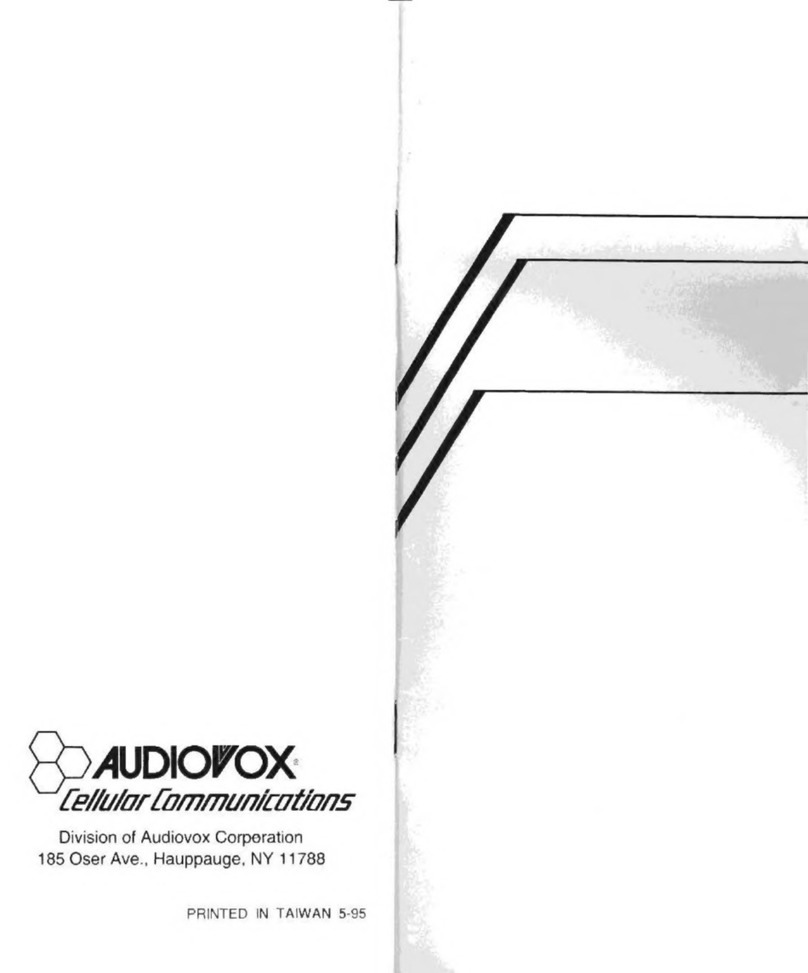
Audiovox
Audiovox Minivox MVX-850 User manual
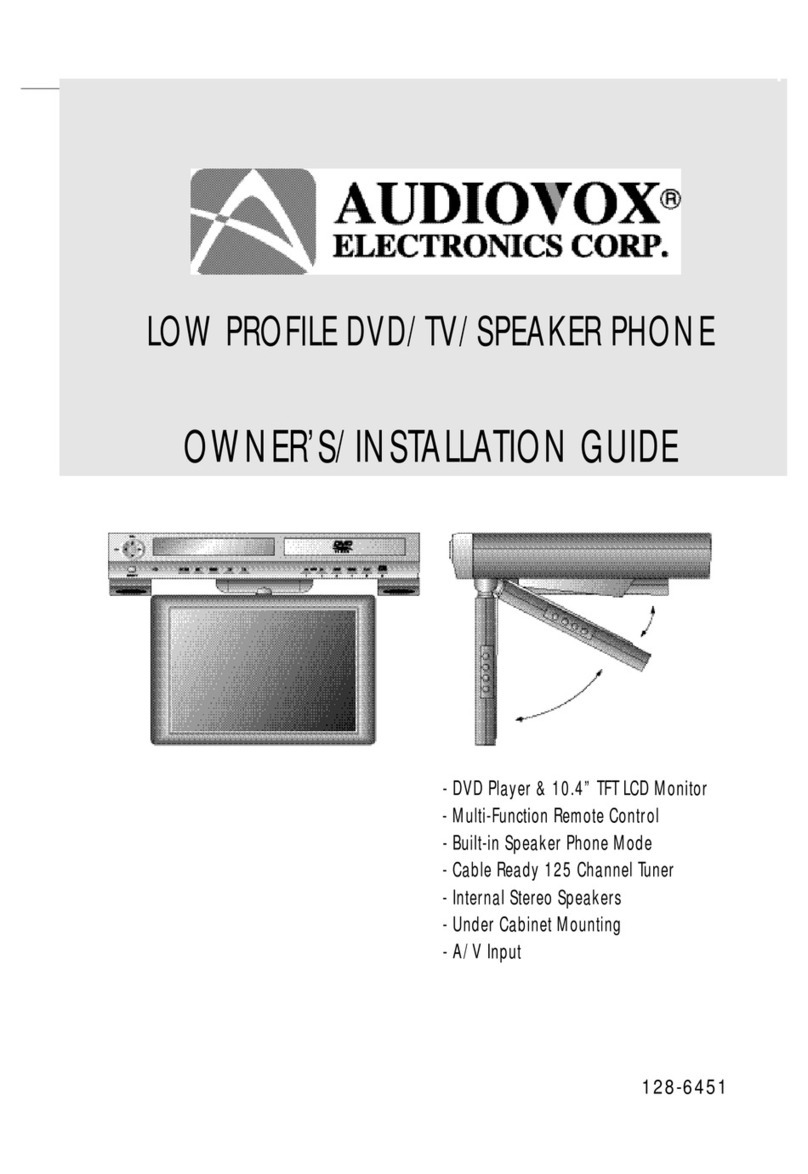
Audiovox
Audiovox Car DVD Player/Monitor Combo Quick start guide

Audiovox
Audiovox CMD-8500 User manual
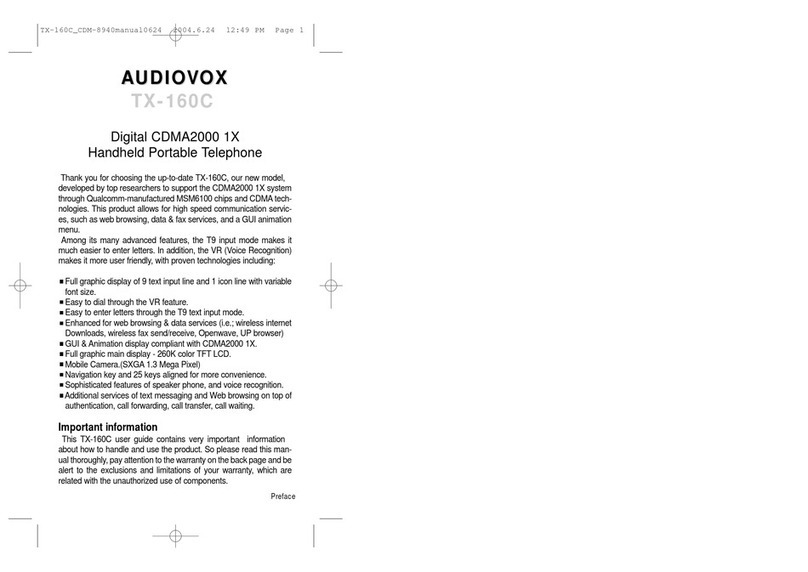
Audiovox
Audiovox TX-160C User manual
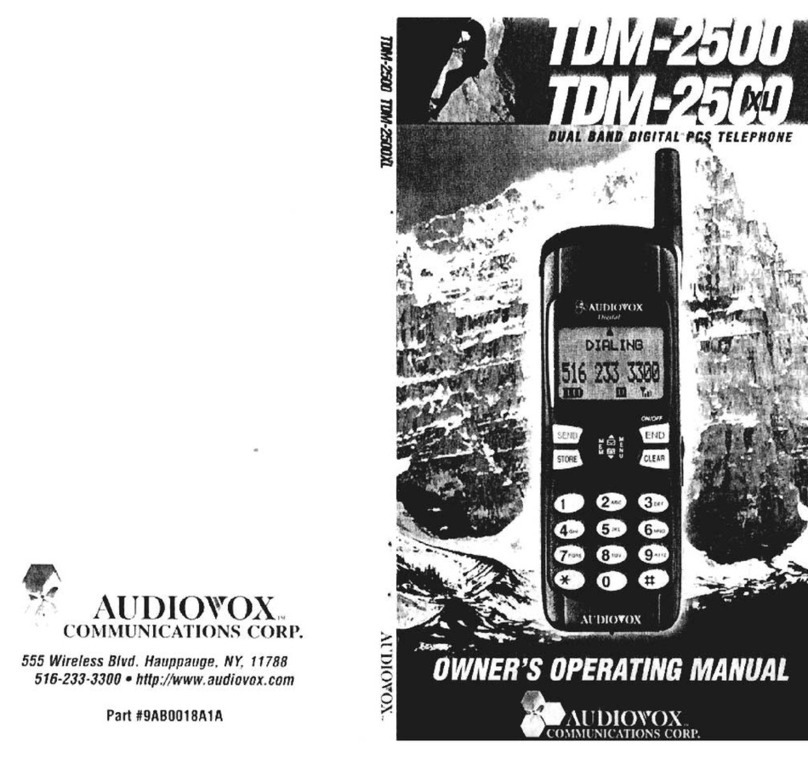
Audiovox
Audiovox TDM-2500 Operation manual
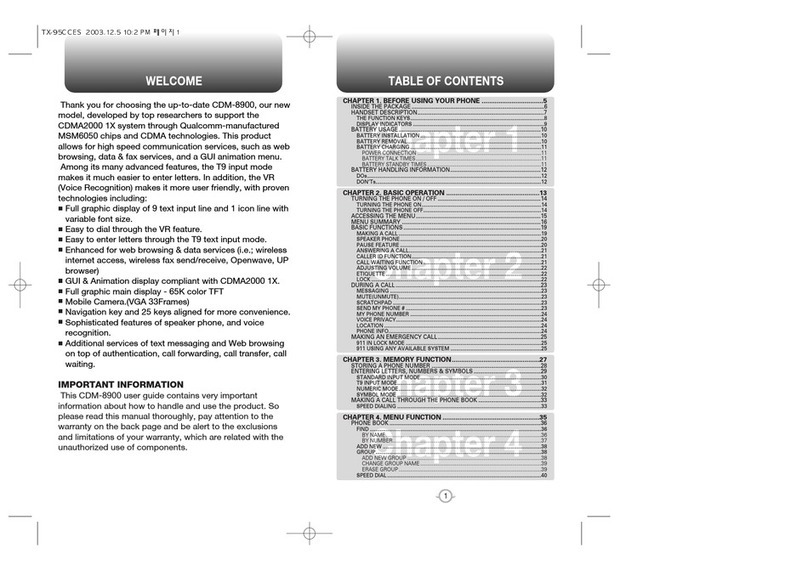
Audiovox
Audiovox CMD-8900 User manual
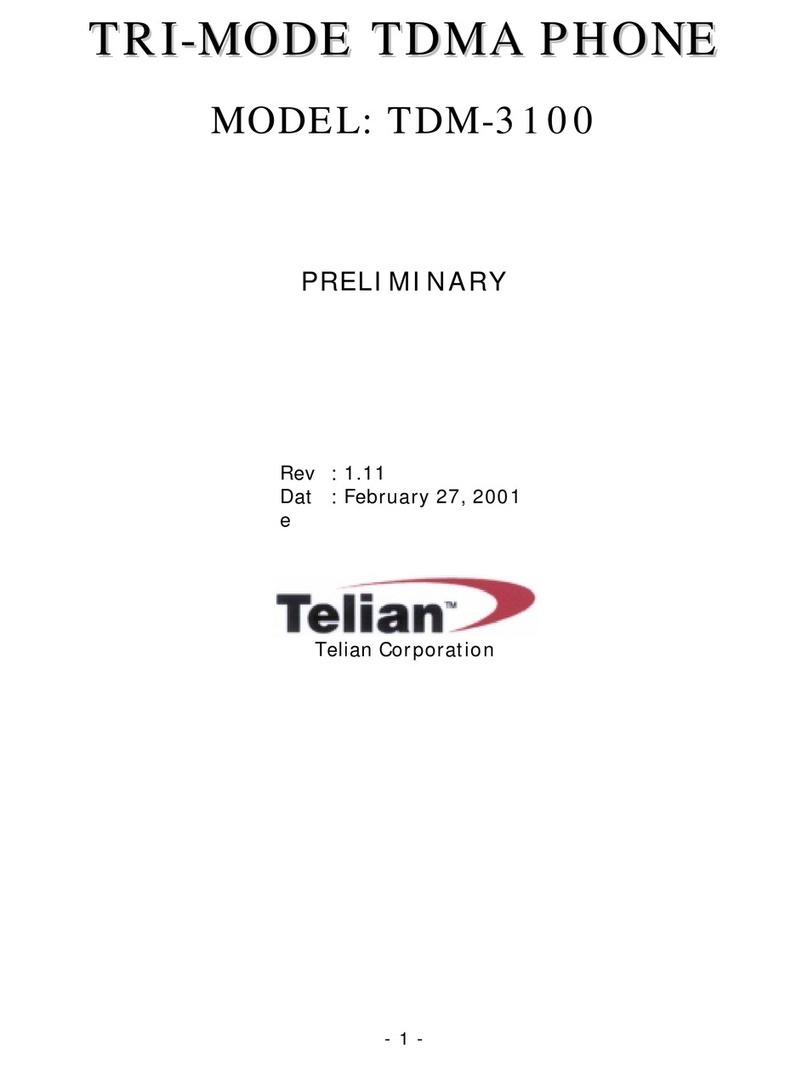
Audiovox
Audiovox TDM-3100 User manual
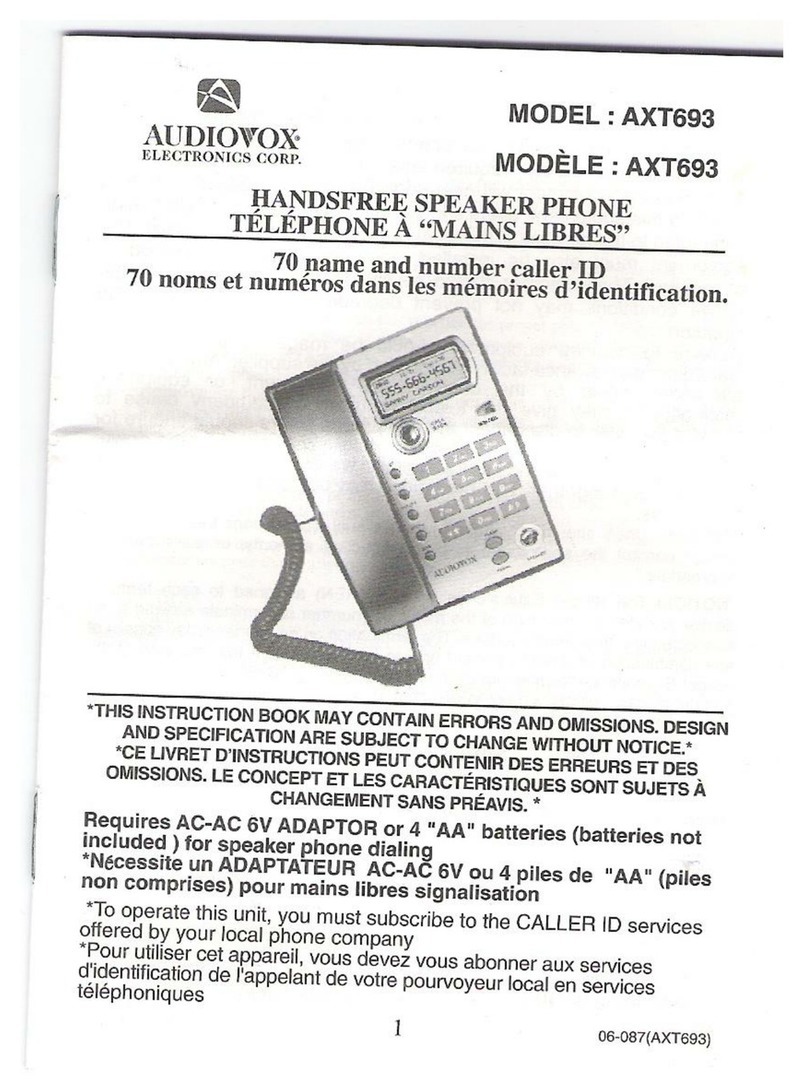
Audiovox
Audiovox AXT693 User manual
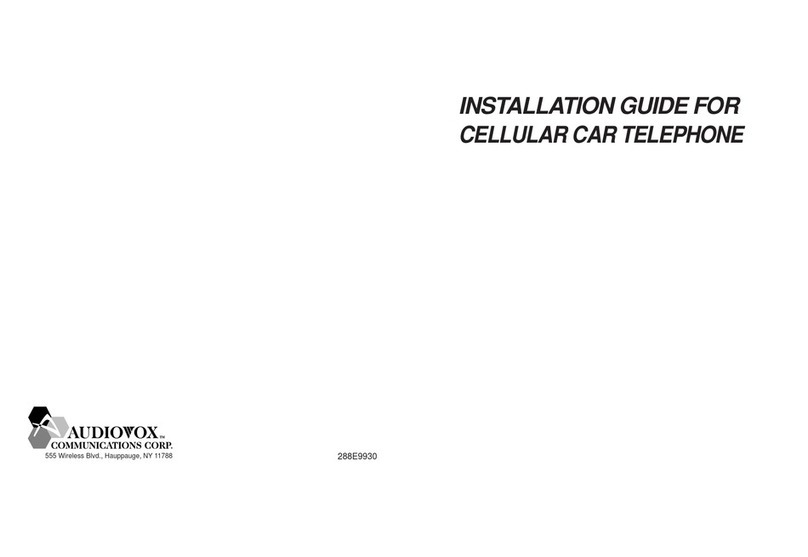
Audiovox
Audiovox CMT9300 User manual
